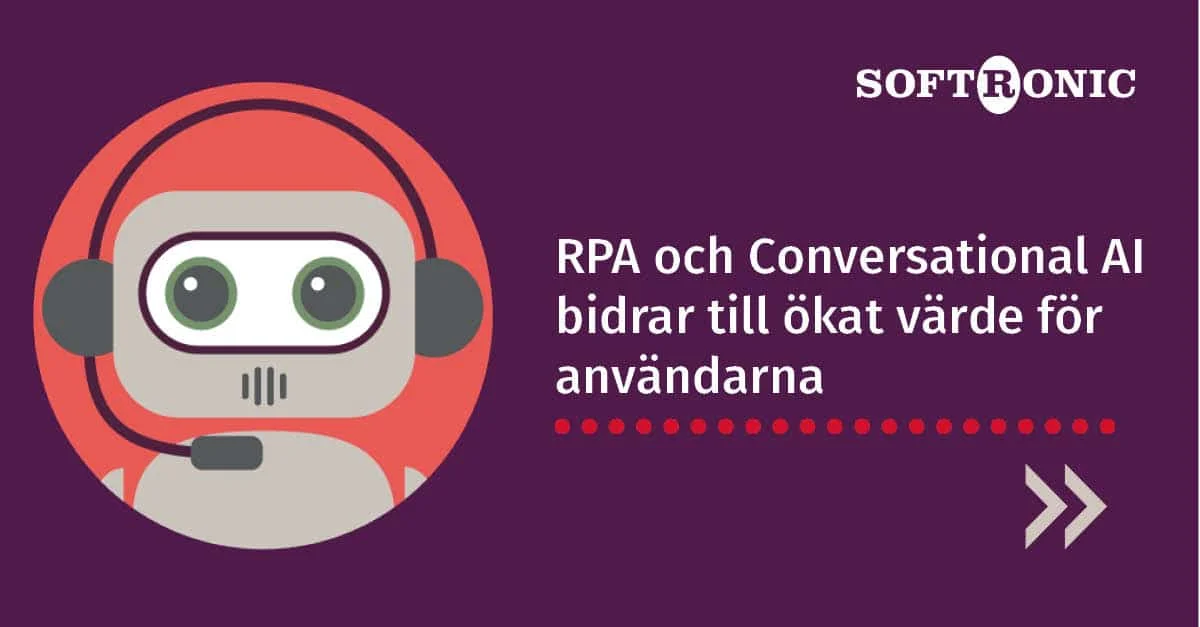RPA or Robotic Process Automation is a relatively new technology that has already ended up high on the agenda, and after four years is still in the top five searches at the analyst company Gartner. Conversational AI (or Digital Employee/chatbot) takes the pressure off your own staff, increases accessibility and enhances the user experience. An increasing number of companies and organisations realise the important role it plays in improving their level of service and accessibility for their users.
At Softronic, we work every day with our customers both with RPA and Conversational AI/chatbots. Our robots create value for the users/customers of, for example, the Swedish Tax Agency, several municipalities and several unemployment insurance funds. The value and the social benefits that we deliver is something that we call GoodTech – Technology that does good in society.
One of the people working to create value for our customers is Vincent Lenngren. We are going to introduce you to selected employees in the coming blog posts who work with these issues, so that we can gain a greater understanding of what is involved in automating processes and training chatbots.

Vincent, can you tell us when it is appropriate to introduce a chat robot?
“Here is an example: instead of you as a customer having to search for information on a website or sitting in a phone queue, you, the user or customer, can get a quick answer. And we make sure that our chat robots can answer the most frequently asked questions.”
That is interesting. Can you give us a more specific example?
“Administrators, agents or customer service employees can spend more time on dealing personally with customers who really need it, instead of answering repetitive questions over and over again. A chat robot can, for example, give general answers and if the person has a specific question, the robot can connect them to a human being. One advantage is that people can get help no matter what time of the day or night it is.”
This sounds really great. So it must result in a lot of efficiency gains?
“Yes, it means that you, as a customer, can get help and support with your particular matter at any time of the day or night, while the administrators can, for example, prioritise other duties that require more time or are more complex.”
Can you tell us more about your role in this work?
“I work continually on making a robot’s ‘brain’ more effective, while also working on what it should be able to do. We call this brain the ‘model’ and it’s built up of different sentences, which are compared with other sentences. The better I work on these sentences, the better the robot will understand what the person in the chat actually wants.”
That is exciting. How does it actually work in practice?
“We work with the customer to look at what the users ask for. This shows us what the robot should be able to answer. It is the customer who understands their users and writes the answers that we add to the robot. We hold different workshops where we work together to decide on new topics that need to be filled with answers and sentences. We then go back to our own corners and test the results. Once the quality is good enough, we release this topic to the users.”
Will the robot have finished its learning?
“No, developing, training or teaching a robot is always a work in progress, as it has to be able to expand its knowledge base. It must be adapted to the operations or, in other situations, to the process or operational area that it needs to give answers for. This varies, of course, depending on why an organisation has decided to introduce a robot or chatbot. There can be extremely specific individual questions that do not change, so the robot doesn’t need to be retrained in the same way for this.”
Can it take on extremely difficult and complex questions or tasks?
“Yes, absolutely. But we recommend starting with the lowest-hanging fruit. This will create the most value for an organisation. Ask yourself which process requires the most amount of time and is repetitive? This is where you can create direct value and the most efficiency gains. We then believe that the most advanced questions should be passed on to employees who can offer a personal service. The best robot can manage around 90% of the dialogues and this is what we strive for in everything we do.
Keep an eye out in the future when you will get chance to meet another employee!”
